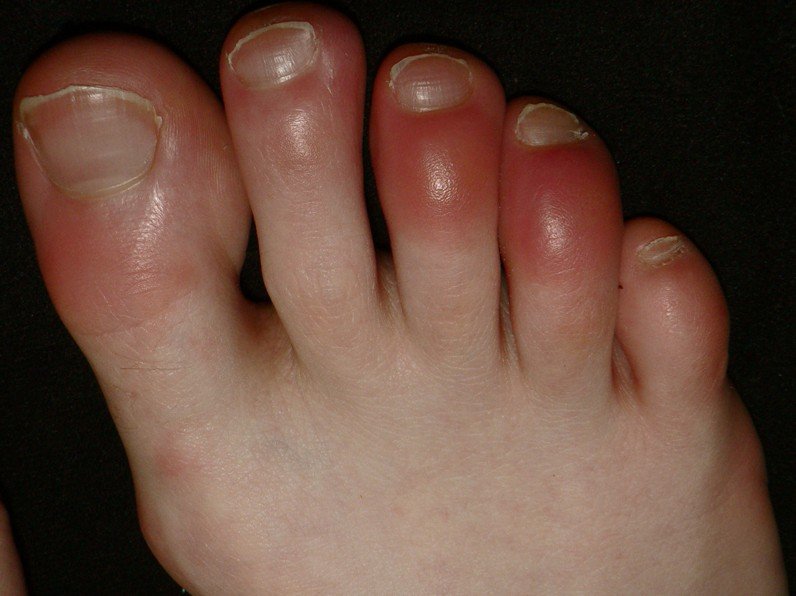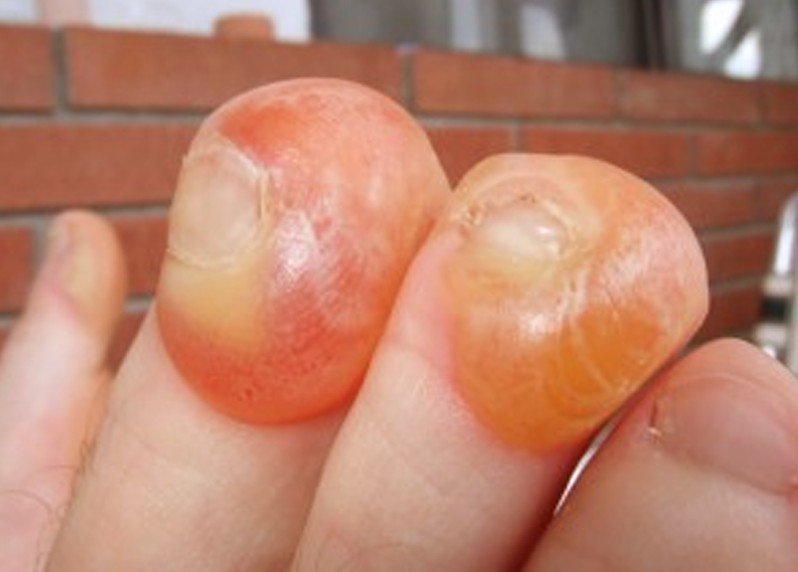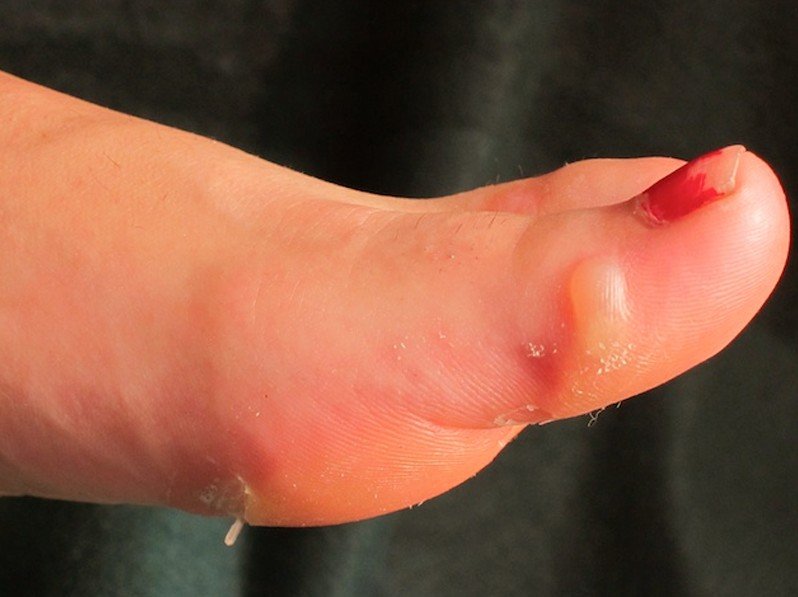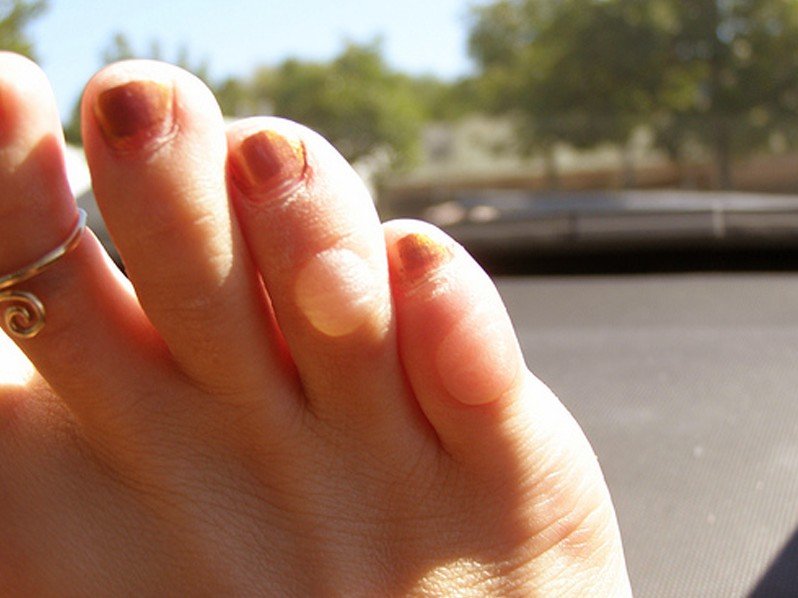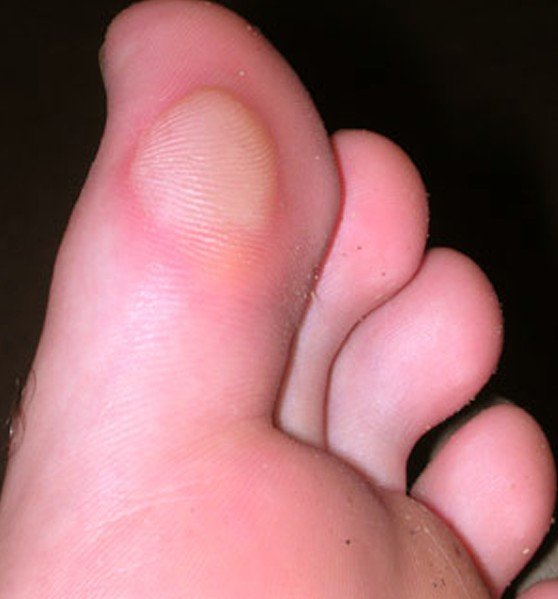Blisters on Toes
Having blisters on toes can lead to discomfort and even affect one’s ability to walk. There are many reasons that cause blisters to appear in the toe area, including inadequate footwear. Some of these blisters can be really painful, especially if they break. When a blister breaks and the liquid comes out, the pain is accompanied by a burning or stinging sensation. Most blisters heal on their own and they do not require any specific treatment. However, in some cases, one can consider certain home remedies and medical treatments, both of which can contribute to a faster and better healing.
Causes of Blisters on Toes
These are the most common causes that lead to the appearance of blisters on toes:
- Inadequate footwear – if a person wears shoes that are too tight, especially in the front, there is a high risk for blisters to occur.
- Excessive rubbing – this appears in persons who wear tight shoes, without socks. It also appears in professional runners or joggers, as there is a lot of rubbing or friction in the area.
- Bone spurs – there are different medical conditions that can lead to the appearance of bone spurs at the level of the toes. These will have a negative effect on the muscles and the skin, causing blisters among other modifications.
- Burns – chemical or thermal burns cause blisters on toes. The most important thing is not to break these blisters, as there is a high risk of infection.
- Hypothermia – the extremities of the body are most sensitive to extreme temperatures. Freezing of the toes can lead to the appearance of blisters, due to the circulatory problems.
- Direct skin contact with chemical contaminants – there are chemical substances that can cause directly blisters, without chemical burns. Proper skin care is necessary immediately after the exposure.
- Infection – improper trimming of the nails or trauma to the toes can expose the area to infection. Blisters filled with clear liquid or pus can appear as a result of the infection.
- Allergic reaction (dermatitis) – this can appear as the toes enter in contact with socks (fabric) or the laundry detergent. Among the many allergic reactions that can occur, there are blisters.
- Excessive foot sweating – this can lead to the formation of blisters, among other modifications.
- Fungi – fungal infections lead to a wide range of symptoms, including bad odor, cracks in the skin and blisters.
Other medical conditions can cause blisters as well:
- Eczema – especially when associated with excessive sweating
- Infectious diseases : Chickenpox/shingles , Herpes
How to Treat Blisters on Toes?
If a blister is filled with blood or pus, then it is recommended you avoid breaking it and leave it to resorb on its own. However, if the blister is filled with clear liquid, you may attempt at breaking it in a controlled manner. If you follow the recommended steps, then the blister will heal faster and you will be able to resume your daily activities, including walking.
The first thing that you need to do is wash your hands thoroughly and also the area of the blister. Then, be sure to apply alcohol/iodine to the area with a cotton swab. Do not press forcefully on the blister or it will break and this is not the way it needs to be handled. Once you have applied the alcohol/iodine to the area, use a previously sterilized needle in order to make a small hole in the blister.
Make sure that the hole is made at the edge and not in the center, as this will allow for better drainage of the fluid. Try to drain the fluid without breaking the whole skin, and then finish the process by applying a disinfecting substance. This might sting a little but it is recommended if you want to avoid infection. In order to prevent secondary infections, it is indicated that antibiotic cream is applied to the area as well. The blister should be bandaged and it should be left to heal.
There are several things that you need to consider when it comes to treating blisters on toes. First of all, the larger a blister is, the higher the risk of infection will be. So, make sure that you cover it with a pad, in case you do not want to break it. If the blister happens to break on its own, avoid peeling off the dead skin. You will remove the barrier of protection and you will be at high risk for infection. Instead, cover the area and let it heal. Special dressings are available in pharmacies, allowing for better healing and keeping you infection free. If a blood-filled blister has burst, then make sure you disinfect the area and cover it with a sterile dressing. Also, if the blisters have been caused by burns, avoid using the above methods and do not break the blisters. The risk for infection is high and you will need to visit a doctor for specialized treatment in this situation.
Pictures of Blisters on toes
Here are some of the photos, images and pictures collection of toe blisters…

